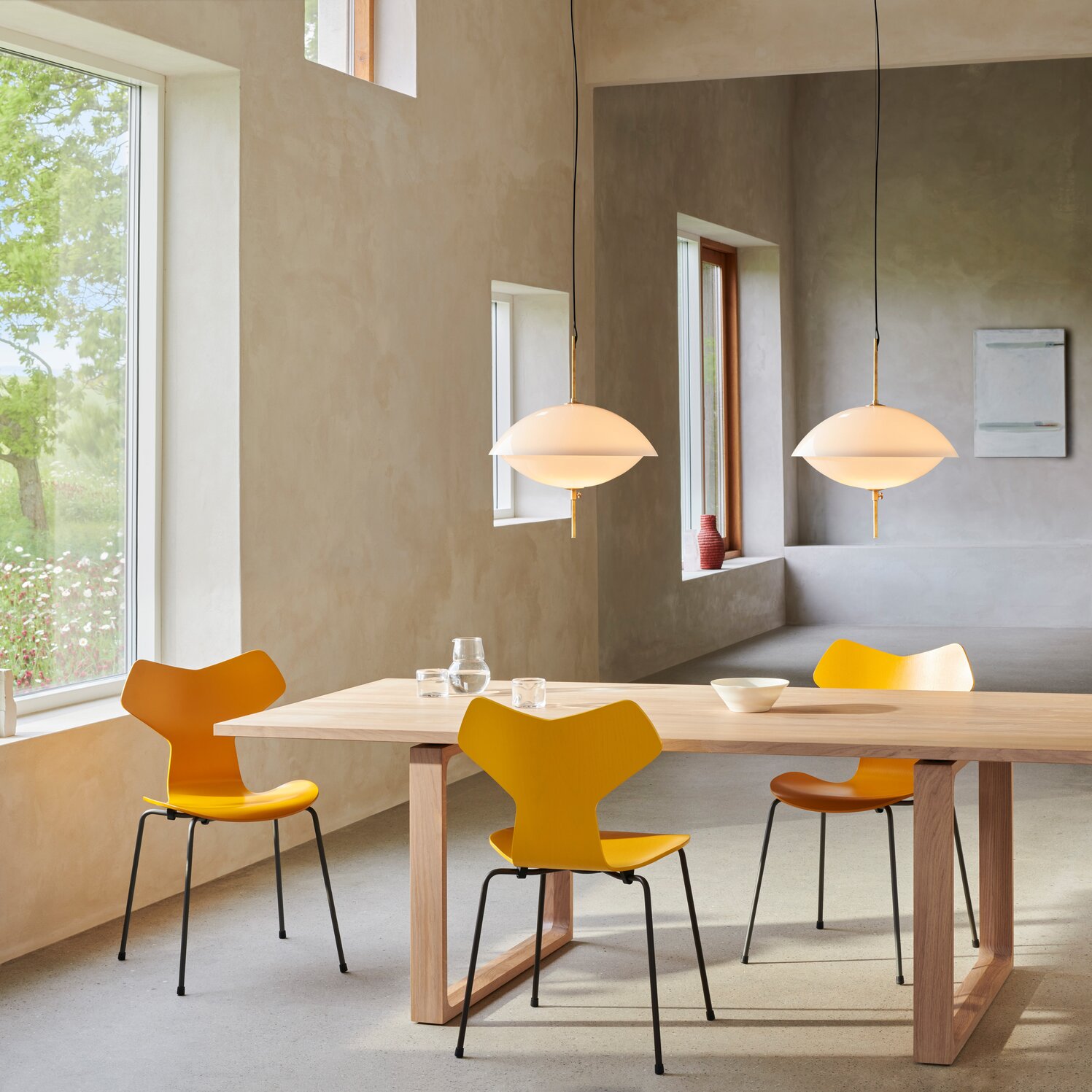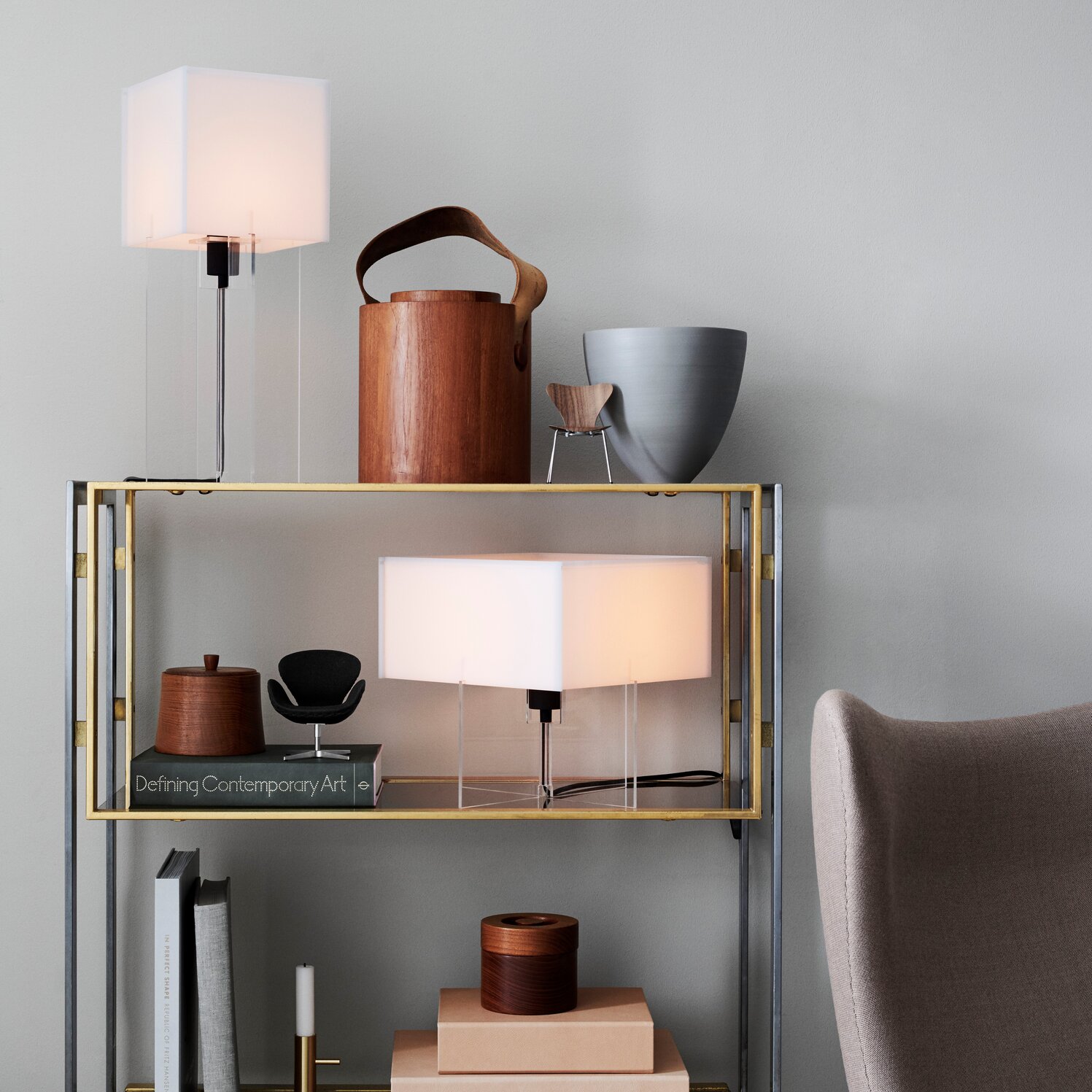According to Fritz Hansen's Design Manager, Karima Andersen, diversity and differentiated lighting are the keywords for choosing the perfect lighting for the home. The home must be a lighting experience where aesthetics must not compromise the technical ability of the lamps.
Photo: Rasmus Hetoft Hansen
For the Design Manager at Fritz Hansen, Karima Andersen, aesthetics and technology must work well together, before a design is really good. In this interview, we asked the Design Manager what the best lamps look like and why the best lamps are the ones that also enliven the space, when turned off.
What does light and design mean to you?
"For me, light is essential because everything is defined by light. Things take shape when we can see light and shadows, just as contrast and perspective can only be experienced, if there is light.
When daylight isn't there, it is that we must supplement with what is called artificial light, the man-made light we know from the incandescent bulb. When design works for me, it's because I insist that a lamp should also be useful when it's off. It should contribute aesthetically to the space in its design, color and materiality - in short, decorate the space. Alternatively, the wish may be that the lamp should be 'invisible', ie. leave a minimal impression - this can be a design quality, too."

What do you find particularly interesting about working specifically with lighting over other forms of design?
"I am a trained classical architect and throughout my career I have worked with design as a focal point, so it will not be satisfactory for me to work with light exclusively from a functional perspective.
Design is my driving force and, in my eyes, it's what enriches our surroundings and the life we live. That being said, working with designer lighting is probably one of the most difficult disciplines at all. It is extremely complex and requires both technical and design experience. I find that aspect, particularly interesting."
"I insist that a lamp should also be useful, when it is switched off. It should contribute aesthetically to the room in its design, color and materiality - in short, decorate the room."
What considerations do you have about incorporating both aesthetics and engineering into designer lamps?
"Basically, my philosophy and guiding principles are that technique must never compromise aesthetics. The design must never suffer from technical ability. This is what defines good design. A great example of this is Bodil Kjær's Cross Plex lamp, which in the most beautiful way exhibits what everyone else is trying to hide.
In my mind, it is a stroke of genius how Bodil Kjær manages to make the cord and socket a beautiful focal point in the lamp. By abutting the vertical acrylic plates together to form a space for the cord and ending up in a cutout with space for the socket, the technical parts become a beautiful part of the design. This lamp is one of my personal favorites - designed in 1961, but still contemporary and with a formidable evocative light."

Photo: Lightyears Cross-Plex T-500 Table Lamp / Lightyears Cross-Plex T-300 Table Lamp
In your everyday life, w hen do you experience that light is most important to you?
"At this time of year where the sun is not up quite as long at a time and where the days can be grey and sad, the meaning of light becomes more clear to me.
I am simply dependent on the light that is created indoors is both functional, evocative and that there is enough of it. That’s why I turn on pretty much all the lights when I get home in the evening, and there are many.
The feeling of being able to see everything and that the room feels big enough is of great importance, when you live a large part of your life indoors.
The good LED light sources and LED lamps allow for great energy savings, so it does not give me a bad conscience to have a lot of good light."
What are the typical mistakes that private consumers make when decorating with lighting?
"The most common mistakes I see are pendants over a dining table that don't hang at the right height. They often hang too high, which means that not enough light comes down on the table or that you look directly up at the lightbulb and are blinded by the lightsource."
Diversity creates a good light experience
How do we best place and use our lighting in the home?
"The use of light and its location in the home can, with a few touches, create both good and functional lighting, but also add a special atmosphere to a room.
One of the things I have done in my living room is to place a Kaiser Idell scissor lamp on each side of my sofa. It creates a perfect, direct reading light when sitting on the sofa, but it's also a flexible solution making the light adjustable.
As a whole, it gives a depth to the room that the sofa and the wall behind, are lit up quite well."
What rule of thumb do you use to achieve the full experience of designer lighting in your home?
"I try, as much as possible, to stage my home with lights of different nature to achieve differentiated lighting.
I use lamps that shine both directly and some that shine indirectly - as well as atmospherical lamps. It is also important to combine different typologies, such as table, floor, wall and ceiling lamps, so that the light is placed at different heights.
In addition, I light up the corners; it creates a feeling that the room seems larger. A really good lighting experience lies in the diversity and a really bad one, lies in the opposite; uniformity."
"I can easily flip the bottom of a lamp, no matter where I am - in a restaurant or if I'm visiting someone. If the lamp has an interesting detail, I just have to see who made it. "
Can you mention a thing you do in your daily life that clearly shows that you work with design and designer lighting?
"It is a little embarrassing to admit, but I can find myself flipping the bottom of a lamp no matter where I am - in a restaurant or if I am visiting someone. If the lamp has an interesting detail, I'll just have to see who made the lamp.
In addition, I take a lot of pictures and always have my sketchbook with me. When working with design, you are constantly observing, and in order not to forget the impressions, it is important that they are noted, drawn or photographed, so that you have them for later."
Explore Fritz Hansen's designs here.











